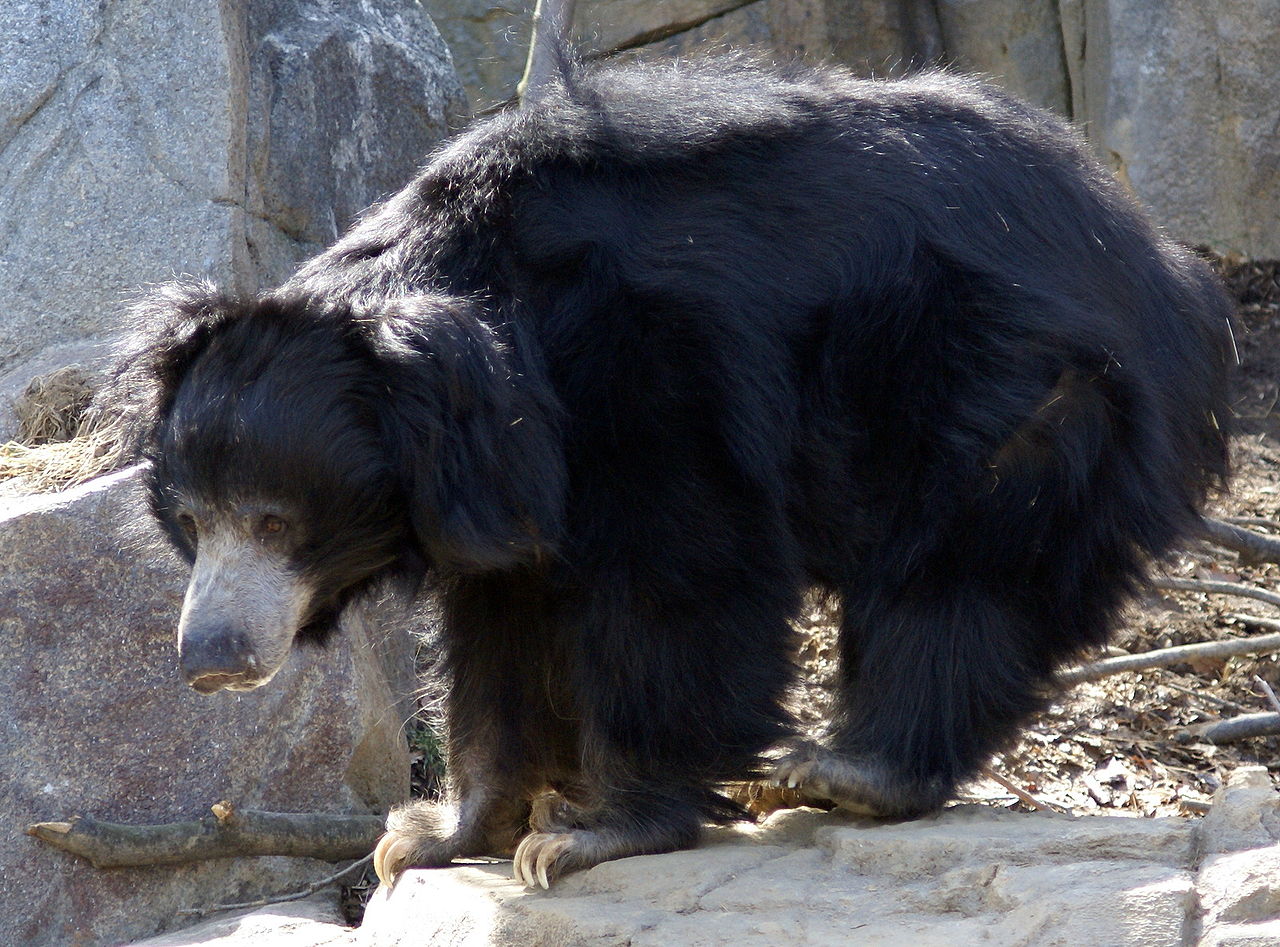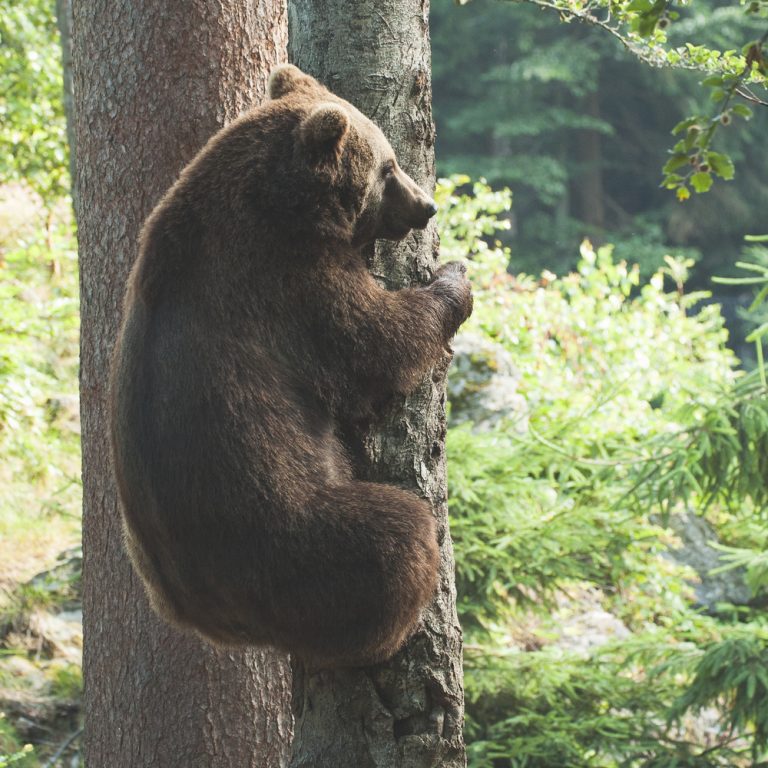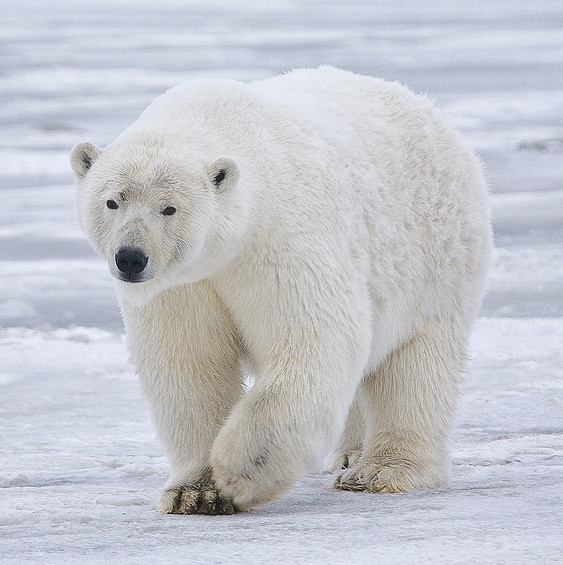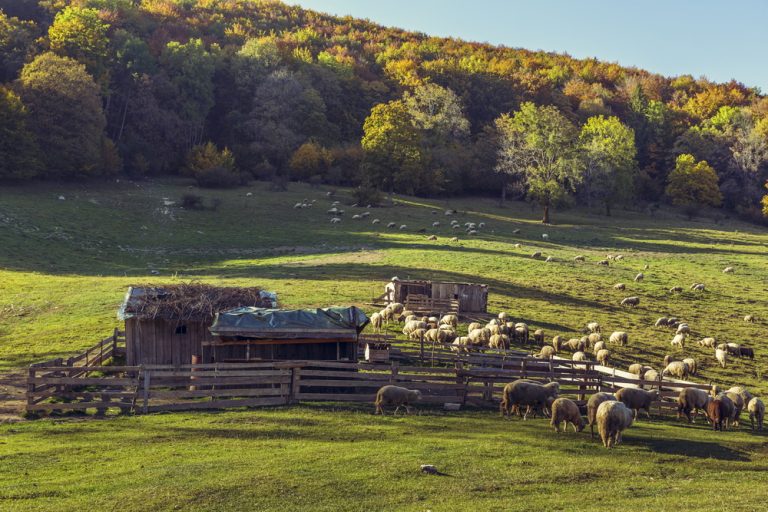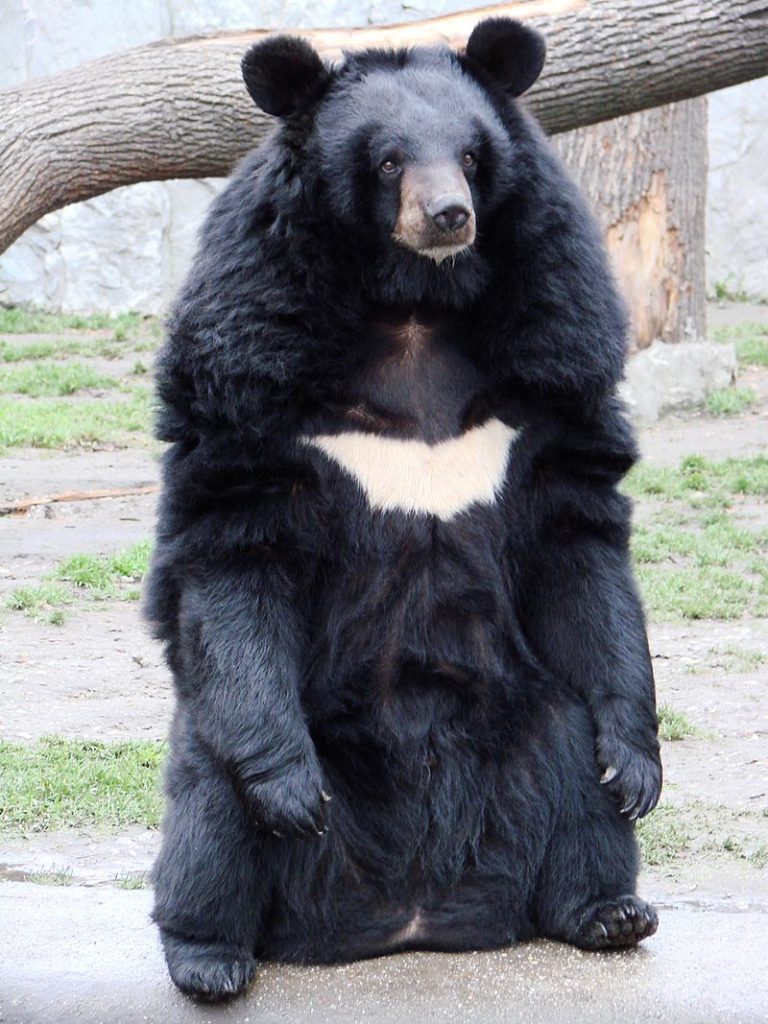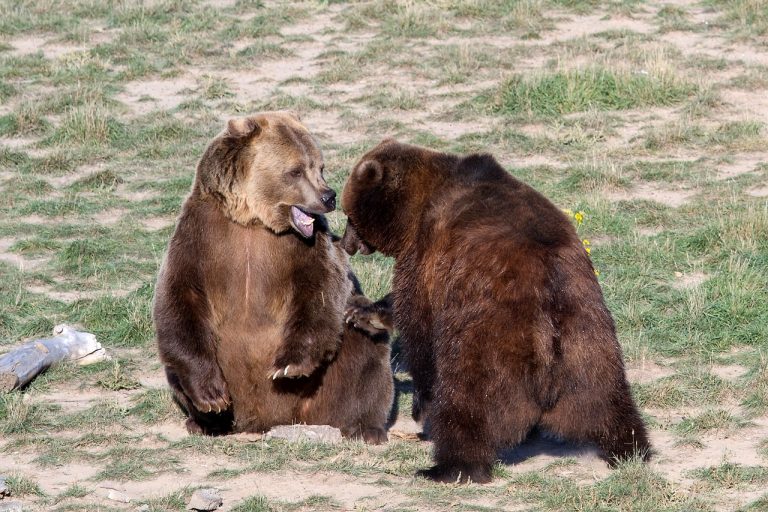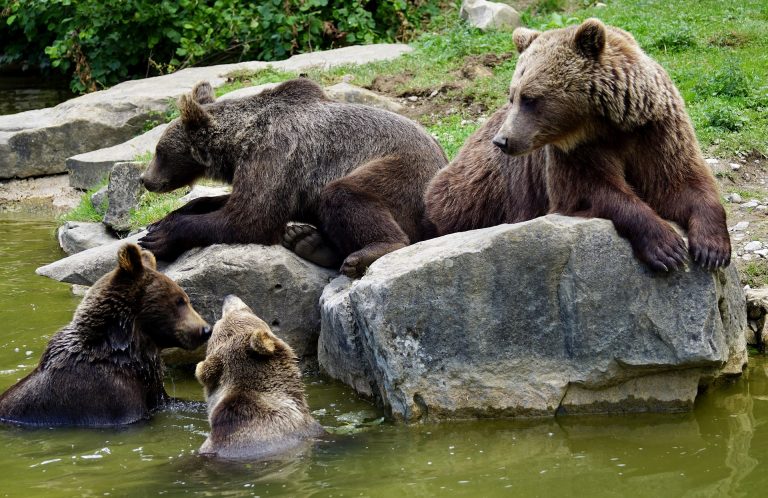Species Profile: The Sloth Bear
The Sloth Bears are the only bears that carry their young on their backs and they absolutely love to eat termites!
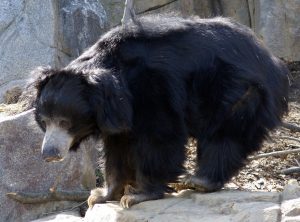
The Sloth Bear is a reclusive, insectivorous mammal of the Ursid family that’s native to parts of the Indian subcontinent and Sri Lanka. They are easily recognized by their long, shaggy, somewhat unkempt looking black fur, and relatively trimmer stature when compared to brown and Asian black bears.
They have long (4 inch), crescent-shaped claws, a thick, long muzzle and a lower lip and palate specially adapted for expertly sucking up insects like termites and honeybees. Sloth bears also have very large floppy ears and knee-jointed legs that allows them to assume almost any position.
They also have the longest tail of any bear species. Though most individuals of this species are black with a whitish Y or V-shaped mark on the chest area, some are rust colored and lack that mark. The Sri Lankan subspecies in particular lacks that marking.
Sloth bears are very territorial and they have a reputation for attacking humans even unprovoked. Although, they can be tamed and they are commonly kept as pets and used to perform tricks for human entertainment and amusement.
This bear like many of its counterparts is under threat from human activity especially due to habitat destruction and by locals hunting them for food and their body parts.
These bears are capable of climbing up smooth surfaces and hanging upside down just like sloths do.
Sloth bears are nocturnal, they don’t hibernate and they are active all year round. They are known for wandering around at night making loud grunts and other sounds as they search for food.
The IUCN classifies the sloth bear as Vulnerable.
1) Scientific Name
Melursus Ursinus
2) Scientific Classification:
- Kingdom: Animalia
- Phylum: Chordata
- Class: Mammalia
- Order: Carnivora
- Family: Ursidae
- Genus: Melursus
3) Life Expectancy
Up to 40 years.
4) Average/Maximum Length
This a moderately-sized bear with adults typically growing up to between 60 and 90 cm (2.0 to 3.0 feet) at the shoulders, and just 1.4 to 1.9 meters (4.6 to 6.2 feet) in full length.
Females are smaller than the males of the species and they also have more fur between their shoulders than the males.
5) Average/Maximum Weight
Generally around 130 kg (290 lbs.), though individual males will weigh anywhere from 80 to 192 kg (176 to 423 lbs.), and females from 55 to 124 kg (121 to 273 lbs.).
6) Maximum Running Speed
When at leisure, sloth bears move in a slow, shambling, almost lazy manner. They set their feet down in a noisy, flapping motion when walking. Though, they can gallop and move much faster than humans when necessary and they are excellent climbers from a very young age.
7) Interaction With/Danger To Humans
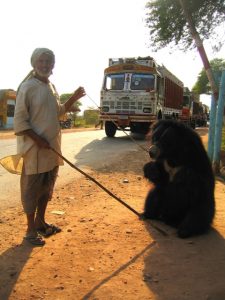
- Interaction with humans
Historically, people have been hunting sloth bears for different purposes over the last few centuries. In the past, they were hunted for sport, to harvest their body parts, or mother bears were killed and the cubs captured to be reared as pets.
Despite several laws barring such actions, people still captured cubs, abused them severely, and trained them up to do tricks, and take part in elaborate dance steps.
Fortunately, the last dancing bear was freed in 2009 though these bears are still used for other entertainment purposes.
Hunting sloth bears is a very dangerous endeavor as they are very resistant to body shots and will charge with extreme rage even when wounded by hunters.
- Danger to humans
Sloth bears do not typically run from humans. In fact, they will stand their ground against humans and other predators especially tigers and leopards. They are very vocal and they will give fair warning by barking, screaming, grunting, roaring, snarling, or yelping when they feel threatened.
Interestingly, it appears that these bears view humans to be as dangerous as tigers, for instance. That’s because they react to humans in their territory the same way they would react to invading tigers, and leopards.
These bears can and will inflict severe injury on the human body if seriously provoked! There are accounts from the 18th century of sloth bears maiming, disfiguring, and killing people. Actually, records show that the sloth bear ranks right at the top of animals most likely to attack humans unprovoked.
Typically, they attack people on the head and neck disfiguring them terribly. In fact, some quarters consider the sloth bear more dangerous to people than even tigers.
8) Reproduction Details
Breeding season varies according to their geographic location. For instance, the Indian sloth bear mates in April to June, and gives birth in December/January, while their Sri Lankan counterparts mate all through the year.
Pregnant females gestate for 7 months and give birth to live young in dens and caves, or in shelters under boulders. A litter will have one or two cubs but at the most three cubs.
Compared to other bear species, the young of sloth bears develop quite quickly. Consequently, they start walking from one month old, are independent at 2/3 years and mature sexually at 3 years old. They ride on their mother’s back as she walks, runs, or even climbs up trees till they are about one third her body size. The sloth bear is the only bear species that carries its young this way.
Unlike many other bear species, adult male sloth bears are generally gentle with cubs.
9) Diet/Hunting Pattern Of The Sloth Bear
These bears have a taste for termites and they are expert hunters of those insects. They detect termite mounds by smell and suck up the insects after demolishing the mounds with loud, determined puffs. The sucking sounds they make can be heard from up to 180 meters away!
However, unlike other bear species, they don’t congregate in feeding groups and they rarely if ever prey on other mammals.
Sloth bears also indulge in fruits and plants especially mangoes, sugar cane, jackfruit, and the pods of the golden shower tree. Like the sun bear, this bear is also extremely fond of honey.
Female sloth bears feed their cubs with a specially prepared substance called “bear’s bread.” Bear’s bread is a regurgitated mixture of half-digested food items like jack fruit, wood apples, and pieces of honeycomb. This substance hardens into an edible, sticky, dark-yellow mass much like bread and though it’s intended for the sloth bear cubs, some Indian natives consider it a delicacy.
Strangely enough, Asian elephants and the Indian rhino do not tolerate sloth bears AT ALL in their vicinity for reasons unknown. These two animals will usually charge sloth bears on sight.
10) Alternative Names
- Labiated Bear
- Bhalu (Hindi)
11) Population And Conservation Status
IUCN studies estimate that there are not up to 20,000 sloth bears alive in the wild on the Indian subcontinent and Sri Lanka.
Human-to-bear conflict over the years has caused continuous problems between both species with many sloth bears getting killed. The cause of contention, as usual, is human encroachment on bear territory. Fortunately, the governments of these countries are making progress by educating natives about the need to live harmoniously with the bears.
Government managed reserves are also a good way to protect these creatures as experience shows.
For now, these bears are protected under Indian Law and by CITES. Thus, trading in sloth bears or their parts is a criminal offence. In addition, the Indian government has banned using sloth bears for any kind of entertainment.
There are also major sloth bear sanctuaries in India such as the Daroji bear sanctuary in Karnataka.
However, despite that and a ‘Sloth Bear Welfare Project,’ people still capture and use them for such activities.
12) Ancestry And History
DNA analysis shows that the sloth bear descended from ancestral brown bears during the Pleistocene Epoch. It’s native to the Indian Subcontinent and shares many features found in other insect-eating mammals through convergent evolution. The Sri Lankan population is regarded as a distinct subspecies.
During the 17th Century, researchers classified it as being the same with South American sloths, but it was subsequently identified and properly classified as a true bear.
13) Distribution And Habitat
Sloth bears inhabit the warm forested areas and grasslands of India, Sri Lanka, Bangladesh, Nepal, and Bhutan. Wherever they are found, they appear to favor lower elevations and drier forests with rocky outcrops.

